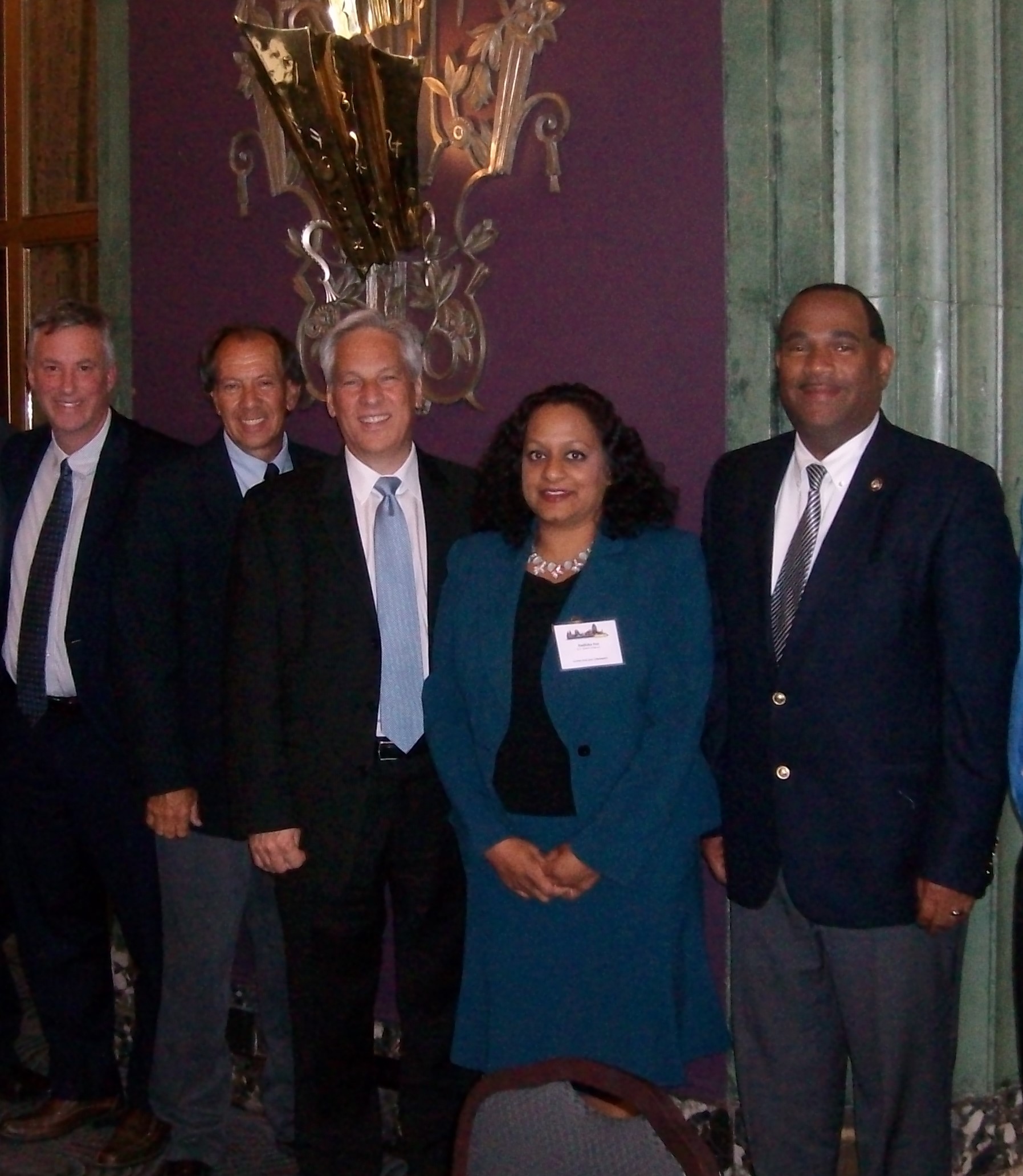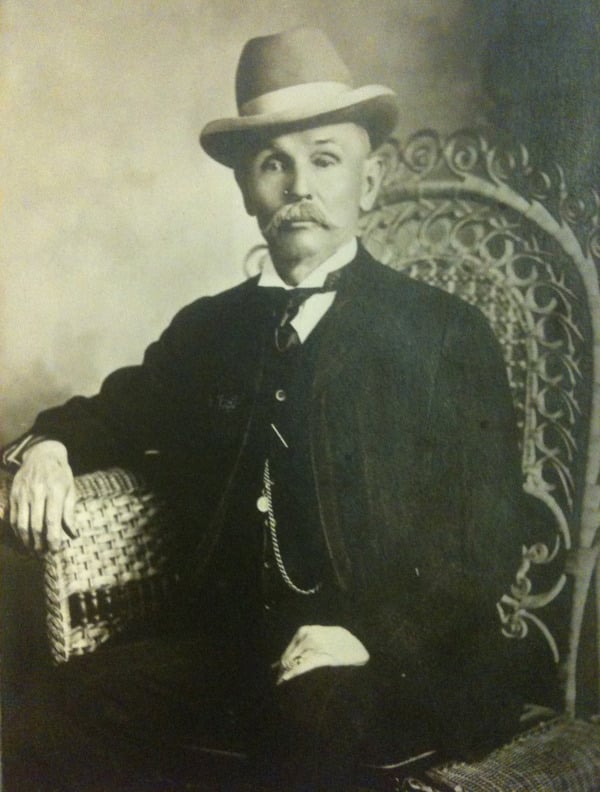This is the second in a two-part series focused on a roundtable discussion at the 5 Cities Plus conference that took place at the Hilton Netherland Plaza in Cincinnati last week. Regional and national wastewater and stormwater utility leaders sat down with the Northern Kentucky Tribune to discuss the state of the industry.
Part one of the series focused on some of the challenges the utilities face, including meeting the requirements of federally mandated consent decrees. In part two, leaders talk about some of the innovative and cost-efficient solutions they have developed and shared to help meet those challenges.
By Mark Hansel
NKyTribune managing editor
The need to replace aging infrastructure, prepare for future growth and fund consent decree projects has public utilities looking at ways to cut costs and increase revenue streams.
At last week’s 5 Cities Plus conference in Cincinnati leaders from some of the largest wastewater and stormwater utilities in the Midwest shared some of the innovative ideas being implemented to increase efficiency and improve their financial picture.
No longer are the utilities looking at themselves as just a service agency. The idea that wastewater is a product and utilities are a business that can be economically viable and self-sufficient, or even profitable, has fueled the innovations and the move toward greater efficiencies.
The National Association of Clean Water Agencies uses the phrase “Water Resources Utility of the Future” to describe the strategy.
NACWA CEO Adam Krantz said utilities are embracing the notion of wastewater as more than just something that is treated and returned to the water bodies.

“Energy that we can create from the waste stream no longer just gets flared or burnt, we use it to run our plants now and we sell back to the grid in some places,” Krantz said. “When you connect all of the dots, you get the Utility of the Future and the future is now, in a lot of ways, with the technologies that are starting to come in.”
Benefits and cost savings are also being realized through innovations that reduce operating expenses and by taking an approach that results in a win-win for the utility and the communities it impacts.
Tony Parrott, executive director of the Cincinnati Metropolitan Sewer District, said the utilitie’s Lick Run Project is a great example.
“About five years ago we had to make a decision on whether we were going to spend $500 million on a deep tunnel,” Parrott explained. “We asked for a time out and we went to Region 5 U.S. EPA and said ‘we think we can come up with a cheaper solution.’ We spent two years negotiating an alternative to a deep tunnel, now named the Lick Run Project, which is going to go to bid later this year.”
The project to improve combined sewer overflows in the Lower Mill Creek area is focused in the South Fairmount, Price Hill and Westwood communities. It is expected to save the MSD about $250 million, or roughly half of the expense of a deep tunnel.
“In our project selections, we try to look at how we can not only resolve an issue, but how we can make investments that are going to bring value to the communities we are doing work in,” Parrott said. “With Lick Run, we are bringing forth as a remedy a project that is going to make investments in a community that has seen a lot of blighted properties, foreclosures and disinvestment. That’s changing the script of how you deal with regulatory or environmental issues.”
David Rager, executive director of Northern Kentucky Sanitation District No. 1, said sharing ideas that increase efficiency is a primary purpose of the conference.
“We are not reinventing the wheel and we learn from each other,” Rager said. “Forty percent of our total cost of utilities is in operations and we have been able to cut that by $5 million in 36 months. A lot of that has come by learning from these guys, some of the tools and techniques that they are using to reduce operating costs.”
SD1, for example, now uses Redzone cameras, a new technology that allows the utility to perform sewer-line inspections using just one employee; a practice that previously required four people.
“It is about cleaning the water, keeping our rivers safe and clean for future generations, but these investments are also huge drivers of economic growth. When we make these investments we are keeping our environment clean and ensuring public health, but we are also promoting economic growth and community vitality.”
Radhika Fox, director of the Value Of Water Coalition
“It also allows the person to do two stretches of pipe at the same time, which is a huge savings in labor costs,” Rager said “We are also introducing automation in our plants to monitor power consumption, so we know when is the optimum time to bring things on and off line, in terms of what rates we are being charged at different times of the day.”
Brian Bingham chief of operations at the Louisville and Jefferson County Metropolitan Sewer District said that utility has also begun to realize the economic value of its product.
“We currently take the (product) from all of our plants and we make a Class A, or a food-grade fertilizer,” Bingham said. “We distribute that to nine states and currently we make 80 tons of that a day and we sell every drop of it we can make.”
With its distribution contract nearing completion and with new technologies available, Bingham said the utility is now evaluating whether to buy new equipment or explore other uses for the product.
“We want to be environmentally friendly, but we have to also be customer friendly,” Bingham said.
Despite collaboration, wastewater utilities continue to struggle to meet the demands associated with the services they deliver.
Radhika Fox of the Washington D.C.- based Value of Water Coalition said utilities must remain sustainable because their value goes beyond that direct service.
“It is about cleaning the water, keeping our rivers safe and clean for future generations, but these investments are also huge drivers of economic growth,” Fox said. “When we make these investments we are keeping our environment clean and ensuring public health, but we are also promoting economic growth and community vitality.”
In 2014, a national research study by the Virginia-based Water Environment Research Foundation looked at the 10-year plan of 30 large utilities. Among its findings were that the combined investments of the utilities is expected to contribute about 290,000 jobs and generate an estimated $500 billion in economic output.
While the accuracy of such staggering numbers is subject to scrutiny, panel members said a few facts are irrefutable.
There will always be a demand for the essential services the utilities provide and finding ways to deliver them in a safe, responsible and cost-efficient manner continues to be a challenge.





















